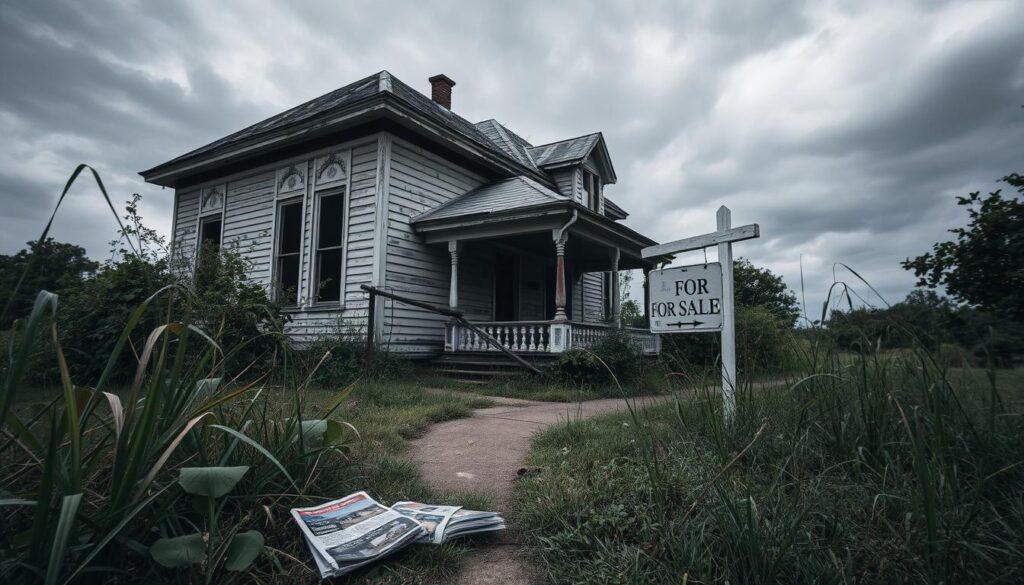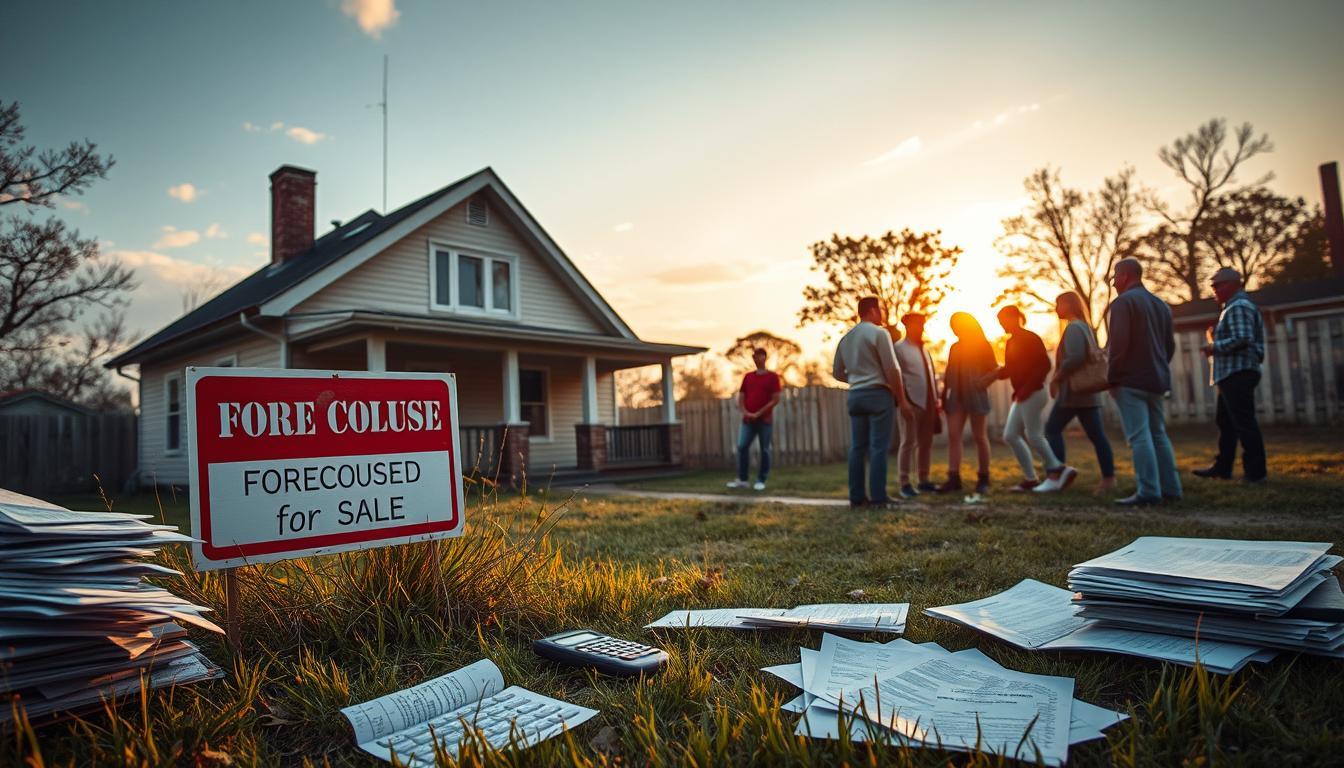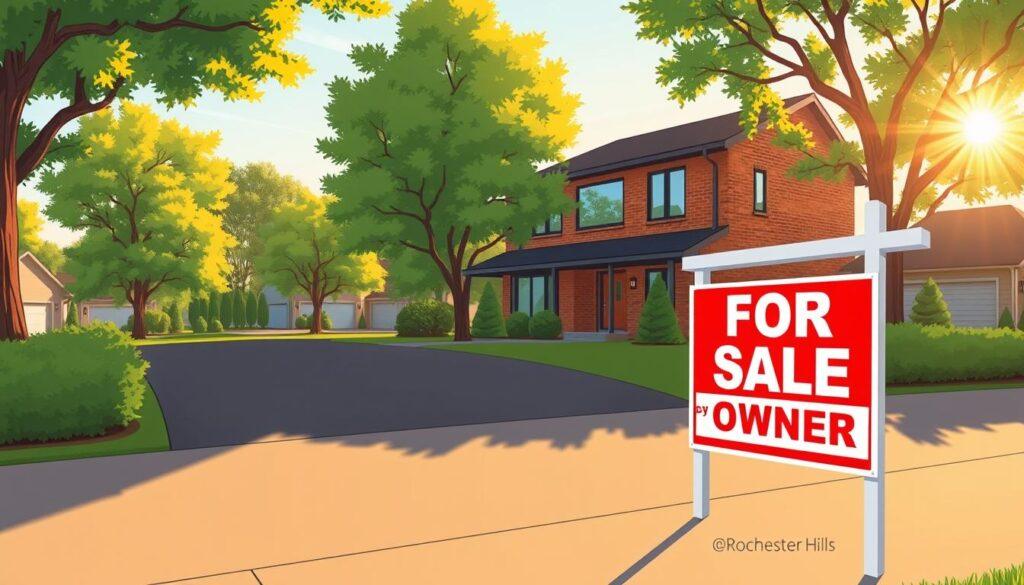Have you ever thought about how homeowners in trouble can turn their situation around? Selling a foreclosed home can seem daunting, especially when you’re facing financial issues. But, knowing how to sell a foreclosed home is key, as timing and strategy are everything.
In this guide, we dive into important strategies for selling a foreclosure. We’ll give you the tools to handle the complex process of selling a foreclosure property. Our goal is to help you, whether you’re selling before or after a foreclosure notice.
The foreclosure process varies by state, with some starting it 3 to 6 months after a missed payment. Knowing the steps, from getting the right documents to using smart selling tactics, can boost your success. Let’s get into the important details that will prepare you for this challenge.
Key Takeaways
- Understanding the foreclosure timeline is essential for effective planning.
- Pre-foreclosure sales provide benefits like time for minor repairs and staging.
- Working with experienced real estate professionals can expedite the sales process.
- Proper documentation and negotiation skills are critical in closing the sale.
- The condition of the property significantly affects the pricing strategy.
Understanding Foreclosure and Its Impact on Homeowners
Foreclosure is a tough process that affects homeowners a lot. It’s key to know about foreclosure if you’re facing money troubles with your mortgage. A foreclosed home is one taken by a lender because the owner can’t pay their mortgage.
There are important steps in the foreclosure process. Knowing these can help homeowners deal with it better.
What is a Foreclosed Home?
A foreclosed home is one taken by a lender when the owner can’t pay their mortgage. These homes often cost less than market value, attracting buyers. However, they might need repairs due to neglect.
Buyers should watch out for issues like squatters. This can make buying these homes more complicated.
The Foreclosure Process Explained
The foreclosure process starts when a borrower misses three payments. The lender then sends a notice of default (NOD). This notice begins the formal foreclosure process.
States have different foreclosure laws, affecting how long it takes. On average, it’s 2-3 months from the NOD to auction.
At auction, buyers usually need to pay cash. This can limit who can buy. If a property doesn’t sell at auction, it becomes real estate owned (REO). The lender then tries to sell it through a broker.
Before auction, getting preapproved for a mortgage is wise. It shows you’re ready to buy and can make the process smoother.
Steps to Take When Selling a Foreclosed Home
Selling a foreclosed home requires several key steps. First, you need to check the property’s condition. This will help you decide how to sell it. The foreclosure selling process is complex but can be managed with the right steps.
Assess the Condition of the Property
Start by getting a detailed home inspection. This step reveals any repairs or hidden problems. Knowing the property’s state helps avoid surprises and builds trust with buyers.
Homes in poor condition need more work than usual. Knowing what repairs are needed helps set a fair price.
Gather Necessary Documentation for Sale
Having the right documents is crucial when selling a distressed property. You’ll need:
- Foreclosure notices
- Loan information
- Title documents
- Property tax statements
- Home inspection reports
Being organized and ready with these documents can reduce stress. Buyers need this info to make smart choices. Having everything ready makes the selling process faster and more trustworthy.

| Document Type | Description | Importance |
|---|---|---|
| Foreclosure Notices | Legal notices issued regarding the loan default. | Essential for informing potential buyers of the property’s status. |
| Loan Information | Details about outstanding mortgage amounts and loan terms. | Critical for buyers to understand existing financial obligations. |
| Title Documents | Records proving property’s ownership and any liens. | Necessary to affirm clear title for the buyer. |
| Property Tax Statements | Recent tax bills indicating the tax status of the property. | Important for assessing ongoing costs and liabilities. |
| Home Inspection Reports | Documented condition of the property from a professional inspection. | Helps mitigate buyer concerns by providing a detailed account of repairs. |
How to Sell a Foreclosed Home: Key Strategies
Selling a foreclosed home needs smart pricing and strong marketing. First, understand how to make your property stand out in the market. Using the right tips for selling foreclosed homes can help sell it fast and for a good price.
Pricing Your Foreclosed Home Correctly
Setting the right price is key. Do a Comparative Market Analysis (CMA) to compare your home with similar ones. Look at:
- Location
- Condition of the home
- Recent market trends
- Repair and renovation costs
Talking to real estate pros who know pricing foreclosed homes can help. Since these homes are often bargains, pricing a bit lower can speed up sales.
Marketing Your Foreclosed Property Effectively
Good marketing is vital to get people interested. Use many ways to reach more people. Here are some good methods:
- Professional photography to make the home look better and get more online views.
- Listing on big real estate websites to find buyers.
- Using social media to reach more people.
- Hosting open houses to let buyers see the home in person.
Emphasize the home’s investment value to attract investors. A solid marketing plan can attract buyers and sell the home efficiently.
Enhancing the Value of Distressed Properties
In today’s real estate market, making distressed properties more attractive is key. This can be done by fixing up the property and staging it well. These efforts can greatly change how buyers see the property and what they’re willing to pay.
Making Repairs and Improvements
Fixing up a foreclosed home is the first step to increase its value. Properties with cosmetic and structural problems can scare off buyers. So, it’s important to tackle both big and small repairs.
- Fixing plumbing and electrical issues
- Freshening up paint and flooring
- Ensuring HVAC systems are functional
- Inspecting for roof damage and leaks
Investors need to plan a budget for these repairs. Remember, the cost should be worth the investment. Good repairs make the property safer and more appealing to buyers.
Staging Your Home for Potential Buyers
After repairs, it’s time to stage the home. This makes it welcoming and shows off its best features. Important things to remember include:
- Decluttering and depersonalizing rooms
- Arranging furniture for optimal flow and function
- Incorporating fresh décor and modern trends
- Enhancing curb appeal with landscaping and exterior touches
Good staging attracts buyers and can lead to faster, higher sales. It makes the home stand out in a crowded market.

| Repair Type | Impact on Value | Estimated Cost |
|---|---|---|
| Plumbing Repairs | High | $500 – $2,000 |
| HVAC System Check | Medium | $300 – $1,500 |
| Cosmetic Updates (Paint/Flooring) | Medium to High | $1,000 – $4,000 |
| Landscaping | Medium | $200 – $1,000 |
Negotiating and Closing the Sale
Selling a foreclosed property needs good negotiation skills. Working with real estate experts can make this easier. They know how to sell bank-owned homes and negotiate well with banks.
Working with Real Estate Professionals
Real estate pros are key in foreclosure deals. Banks often use them to list and sell properties. This helps sellers get their homes sold faster.
Real estate experts help present offers and counter offers well. This makes the negotiation process smoother.
Navigating Buyer Negotiations
It’s important to know what buyers want when selling a foreclosed home. Keeping communication open is key. Banks usually sell homes as-is, so repairs are not always possible.
Strong offers have fewer conditions. This is because banks want quick sales. Doing a thorough property check helps buyers make smart choices.
| Negotiation Strategy | Description |
|---|---|
| Collaborate with Experts | Work with real estate experts to navigate the complexities of selling bank-owned homes. |
| Open Communication | Keep lines of communication open to address buyer inquiries promptly. |
| Minimize Contingencies | Limit contingencies in offers to present a stronger negotiation position. |
| Understand Bank Policies | Familiarize yourself with common banking practices to better frame your negotiations. |
Conclusion
Selling a foreclosed home is challenging, but it can be done right. Understanding the process, pricing well, and being honest in talks are key. This helps a lot. Remember, foreclosure can hurt your credit, so act fast to protect your finances.
Working with real estate experts and getting your home ready can help a lot. This includes staging and fixing up the place. Doing this well can increase your sale price and help you move forward financially.
When selling, you have choices like a traditional sale, short sale, or deals with cash buyers. It’s important to do your homework to succeed. For more tips on selling a foreclosed property, check out this detailed article. Following these steps can help you keep your equity and make a strong financial comeback.






